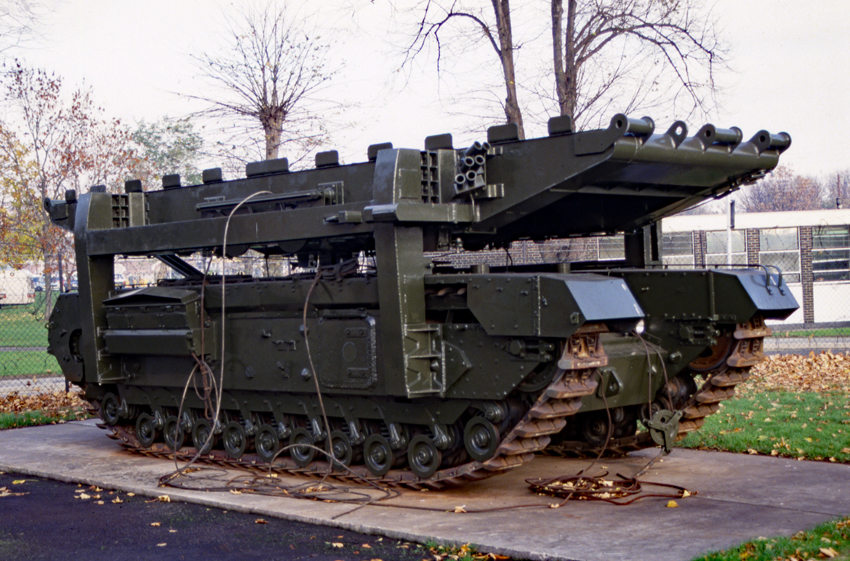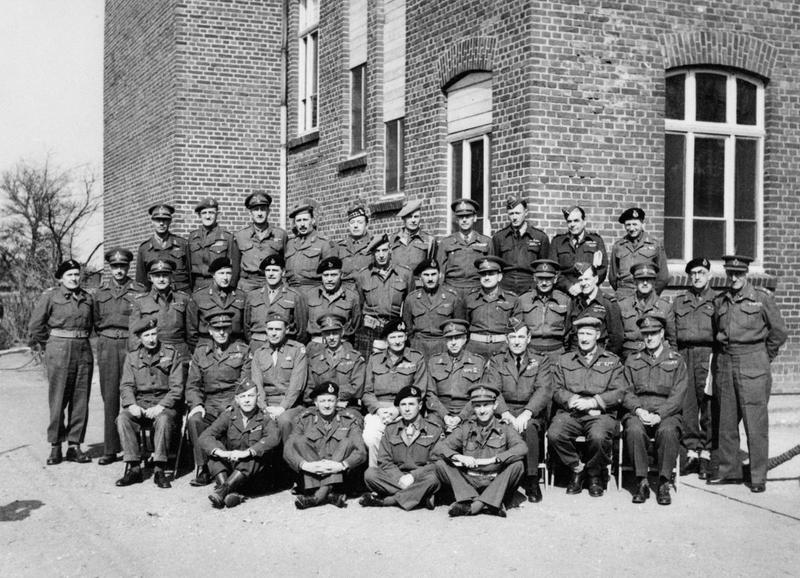|
Operation Clipper
During the Second World War, Operation Clipper was an Allied offensive by the British XXX Corps (which included the American 84th Infantry Division) to reduce the Geilenkirchen salient in mid-November 1944. ''Clipper'' was the preliminary to a wider Allied operation, Operation Queen, to gain control of the Roer valley and of the Hürtgen Forest. Geilenkirchen is situated on the Wurm River, some north of Aachen. The surrounding area is undulating, alternating between woodland, farmland and industrial villages. The area was crossed by a network of passable minor roads, some major roads and a railway line. The Wurm is the major geographic feature.U.S. History, pp545-546 The salient was a German position on the Siegfried Line (''Westwall'') at the boundary between the British Second Army and the American 9th Army. It restricted the movement of Allied forces and was a potential threat. The plan Anglo-American cooperation was prompted by the availability of British artillery ... [...More Info...] [...Related Items...] OR: [Wikipedia] [Google] [Baidu] |
World War II
World War II or the Second World War, often abbreviated as WWII or WW2, was a world war that lasted from 1939 to 1945. It involved the vast majority of the world's countries—including all of the great powers—forming two opposing military alliances: the Allies and the Axis powers. World War II was a total war that directly involved more than 100 million personnel from more than 30 countries. The major participants in the war threw their entire economic, industrial, and scientific capabilities behind the war effort, blurring the distinction between civilian and military resources. Aircraft played a major role in the conflict, enabling the strategic bombing of population centres and deploying the only two nuclear weapons ever used in war. World War II was by far the deadliest conflict in human history; it resulted in 70 to 85 million fatalities, mostly among civilians. Tens of millions died due to genocides (including the Holocaust), starvation, ma ... [...More Info...] [...Related Items...] OR: [Wikipedia] [Google] [Baidu] |
Hobart's Funnies
Hobart's Funnies is the nickname given to a number of specialist armoured fighting vehicles derived from tanks operated during the Second World War by units of the 79th Armoured Division of the British Army or by specialists from the Royal Engineers. They were designed in light of problems that more standard tanks experienced during the amphibious Dieppe Raid, so that the new models would be able to overcome the problems of the planned invasion of Normandy. These tanks played a major part on the Commonwealth beaches during the landings. They were forerunners of the modern combat engineering vehicle and took their nickname from the 79th Division's commander, Major General Percy Hobart. The vehicles converted were chiefly Churchill tanks, and American-supplied M4 Sherman tanks. History Plans to invade continental Europe were completely revised after the failure of the raid on Dieppe in 1942. Allied units in Normandy would need to overcome terrain, obstacles and coastal fortific ... [...More Info...] [...Related Items...] OR: [Wikipedia] [Google] [Baidu] |
XII SS Corps
The XII SS Army Corps was a German corps of the Waffen-SS. It saw action on both the Western and Eastern Fronts during World War II. Formation It was formed on 1 August 1944 in Silesia from the remains of the ''Kampfgruppe von Gottberg'' and the LIII Army Corps, and added to the 3rd Panzer Army. From September 1944, it fought in the West as part of the 1st Parachute Army. Later it fought under the 15th Army on the Siegfried Line and the Ruhr Front. The corps was surrounded and destroyed in the Ruhr Pocket in April 1945. Commanders * 1 August 1944 : SS-Obergruppenführer und General der Waffen-SS Matthias Kleinheisterkamp * 6 August 1944 : SS-Obergruppenführer und General der Waffen-SS Curt von Gottberg * 18 October 1944 : SS-Obergruppenführer und General der Waffen-SS Karl Maria Demelhuber * 20 October 1944 : General of the Infantry Günther Blumentritt * 20 January 1945 : Generalleutnant Fritz Bayerlein * 29 January 1945 : Generalleutnant Eduard Crasemann Order of batt ... [...More Info...] [...Related Items...] OR: [Wikipedia] [Google] [Baidu] |
General Of The Infantry (Germany)
General of the Infantry (german: General der Infanterie, abbr. ) is a former rank of the German army (). It is currently an appointment or position given to an OF-8 rank officer, who is responsible for particular affairs of training and equipment of the ''Bundeswehr'' infantry. Former rank in the German ground forces General of the Infantry was a former rank of General of the branch OF-8 in the German land forces ( Imperial Army, ''Reichswehr'' and ''Wehrmacht'') and also in the Prussian Army and the Austro-Hungarian Army. It was the third-highest general officer rank, subordinate only to Colonel General and Field Marshal. It is equivalent to a three-star rank today. The same rank was adopted by the Finnish Army ( fi, Jalkaväenkenraali) between the world wars. German cavalry officers of equivalent rank were called ''General der Kavallerie'' and those in the artillery corps were ''General der Artillerie''. In 1935 the Wehrmacht added the ranks of ''General der Panzert ... [...More Info...] [...Related Items...] OR: [Wikipedia] [Google] [Baidu] |
183rd Volksgrenadier Division (Wehrmacht)
The 183rd Volksgrenadier Division (german: 183. Volksgrenadier-Division) was a German unit during World War II. History In September 1944 the 183 Volksgrenadier Division was formed of what was left of the 183rd Infantry Division, complemented by non-fighting military personnel (from navy and air force) and civilians. The 183rd Infantry Division had come into existence on 15 September 1944, having been formed from the so-called Schatten-Division Döllersheim. At the end of November Grenadier-Regiment 330 was destroyed at Geilenkirchen during a massive allied offensive against the German positions between the rivers Wurm and Ruhr, between Geilenkirchen and Linnich. Aim of the Ninth US Army was the Rur crossing at Linnich, which would open the way to Cologne. The offensive was called Operation Queen and was launched on 16 November. The 330th Infantry Regiment of the 183rd Volksgrenadier Division was holding the front line at Floverich, Loverich and Setterich, where the Americans ... [...More Info...] [...Related Items...] OR: [Wikipedia] [Google] [Baidu] |
176th Infantry Division (Wehrmacht)
The 176th Infantry Division was a military formation that served with the German Army during World War II. Brief history On 31 October 1944, the 176th Infantry Division was formed out of the 176th Division and was a “training and replacement” formation. It had a strength of about 7,000 men, most of whom were in a poor shape. The division was nicknamed the "kranken division" (sick division), because it was mostly made up of men deemed unfit for military service, such as the physically handicapped and men with severe allergies. One battalion consisted of men with serious hearing maladies, two comprised Luftwaffe personnel, (but with ample infantry training), while many others were convalescents and semi-invalids.U.S. Army, Order of Battle of the German Army, Washington, 1945, p. 193 In November and December 1944, the Division was part of the XII SS Corps, 5th Panzer Army. Between January and March 1945 the 176th Infantry Division was assigned to the XII SS Corps, 15th Army. The ... [...More Info...] [...Related Items...] OR: [Wikipedia] [Google] [Baidu] |
XXIX Tactical Air Command (Provisional)
The XXIX Tactical Air Command (Provisional) was a provisional United States Army Air Forces unit, primarily formed from units of IX Fighter Command. Its last assignment was with Ninth Air Force at Weimar, Germany, where it was inactivated on 25 October 1945. The command was formed as a counterpart to IX Tactical Air Command and XIX Tactical Air Command to support the United States Ninth Army throughout its easterly advance from its formation on 15 September 1944, until VE-Day. Following the end of the war, the unit was converted from a provisional unit to a regular unit. History The unit was formed in France in the fall of 1944 as XXIX Tactical Air Command (Provisional), drawing its cadre from the 84th and 303d Fighter Wings. The two wings served as task force headquarters for the command, with groups and squadrons attached to them as needed.Maurer, ''Combat Units'', pp. 407-408Maurer, ''Combat Units'', p. 416 The command's commanding general throughout its existence was ... [...More Info...] [...Related Items...] OR: [Wikipedia] [Google] [Baidu] |
RAF Second Tactical Air Force
The RAF Second Tactical Air Force (2TAF) was one of three tactical air forces within the Royal Air Force (RAF) during and after the Second World War. It was made up of squadrons and personnel from the RAF, other British Commonwealth air forces, and exiles from German-occupied Europe. Renamed as British Air Forces of Occupation in 1945, 2TAF was recreated in 1951 and became Royal Air Force Germany in 1959. Formation 2TAF was formed on 1 June 1943 as HQ Tactical Air Force from Army Co-operation Command, in connection with preparations then in train to invade Europe a year later. It took units from both Fighter Command and Bomber Command in order to form a force capable of supporting the Army in the field. Bomber Command provided No. 2 Group with light bombers; Fighter Command was split into the Air Defence of Great Britain, retaining fighter units for home defence, and No. 83 Group and No. 84 Group operating aircraft, and No. 85 Group controlling ground-based units, for the S ... [...More Info...] [...Related Items...] OR: [Wikipedia] [Google] [Baidu] |
Ivor Thomas (British Army Officer)
General Sir Gwilym Ivor Thomas, (23 July 1893 – 29 August 1972) was a senior British Army officer who saw active service in both World Wars. He is most notable for commanding the 43rd (Wessex) Infantry Division throughout the campaign in Western Europe from June 1944 until Victory in Europe Day in May 1945, and later rose to become Quartermaster-General to the Forces. Early life and military career Born in Marylebone, London, on 23 July 1893, Ivor Thomas was the son of John Thomas, the harpist to Queen Victoria and King Edward VII and Joan Francis, the youngest daughter of William Denny. He attended Cheltenham College in Gloucestershire and later the Royal Military Academy, Woolwich, from where he was commissioned into the Royal Field Artillery on 20 December 1912. Thomas fought in the First World War, arriving on the Western Front from India with II Battery, XIII Brigade, Royal Field Artillery, part of the 7th (Meerut) Division, in October 1914. Still a second lieutenant ... [...More Info...] [...Related Items...] OR: [Wikipedia] [Google] [Baidu] |
43rd (Wessex) Infantry Division
The 43rd (Wessex) Infantry Division was an infantry division of Britain's Territorial Army (TA). The division was first formed in 1908, as the Wessex Division. During the First World War, it was broken-up and never served as a complete formation. It was reformed in the TA in 1920, and then served in the campaign in North West Europe from June 1944 until May 1945, during the Second World War. The division suffered heavy casualties and gained an excellent reputation. After the Second World War, the division formed part of the postwar TA, and became the 43rd (Wessex) Division/District in 1961. It was finally disbanded in 1967. Formation The Territorial Force (TF) was formed on 1 April 1908 following the enactment of the Territorial and Reserve Forces Act 1907 (7 Edw.7, c.9) which combined and re-organised the old Volunteer Force, the Honourable Artillery Company and the Yeomanry. On formation, the TF contained 14 infantry divisions and 14 mounted yeomanry brigades. One of the ... [...More Info...] [...Related Items...] OR: [Wikipedia] [Google] [Baidu] |
Alexander R
Alexander is a male given name. The most prominent bearer of the name is Alexander the Great, the king of the Ancient Greek kingdom of Macedonia who created one of the largest empires in ancient history. Variants listed here are Aleksandar, Aleksander and Aleksandr. Related names and diminutives include Iskandar, Alec, Alek, Alex, Alexandre, Aleks, Aleksa and Sander; feminine forms include Alexandra, Alexandria, and Sasha. Etymology The name ''Alexander'' originates from the (; 'defending men' or 'protector of men'). It is a compound of the verb (; 'to ward off, avert, defend') and the noun (, genitive: , ; meaning 'man'). It is an example of the widespread motif of Greek names expressing "battle-prowess", in this case the ability to withstand or push back an enemy battle line. The earliest attested form of the name, is the Mycenaean Greek feminine anthroponym , , (/Alexandra/), written in the Linear B syllabic script. Alaksandu, alternatively called ''Alakasandu'' or ' ... [...More Info...] [...Related Items...] OR: [Wikipedia] [Google] [Baidu] |
Kerkrade
Kerkrade ( Ripuarian: ; li, Kirkraoj; german: Kerkrade or ''Kirchrath'') is a town and a municipality in the southeast of Limburg; the southernmost province of the Netherlands. It forms part of the Parkstad Limburg agglomeration. Kerkrade is the western half of a divided city; it was part of the German town of Herzogenrath until the Congress of Vienna in 1815 drew the current Dutch-German border and separated the towns.Jan Buursink and Nicole Ehlers"The Binational City of Eurode". University of Nijmegen. This means that the eastern end of the city marks the international border. The two towns, including outlying suburban settlements, have a population approaching 100,000, of which nearly 47,000 are in Kerkrade. History The history of Kerkrade is closely linked with that of the adjacent town of Herzogenrath, just across the German border. Herzogenrath began as a settlement, called Rode, near the river Worm (or Wurm in German) in the 11th century. In 1104 Augustinian monks founde ... [...More Info...] [...Related Items...] OR: [Wikipedia] [Google] [Baidu] |






